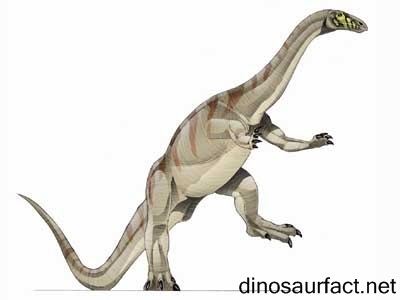Scientific name Camelotia borealis Rank Genus | Class Reptilia Species †C. borealis Phylum Chordata | |
 | ||
Similar Coloradisaurus, Blikanasaurus, Cetiosauriscus, Efraasia, Euskelosaurus | ||
Camelotia living life daniel johnston cover
Camelotia (meaning "from Camelot") was a genus of sauropodomorph dinosaur from the Late Triassic tp the Early Jurassic , from the Rhaetian stage of the Late Triassic to Hettangian stage of the Early Jurassic, what is now England. Paleontologists are divided on which family it may belong to; in the past, Camelotia has generally been assigned to the prosauropods, but this group of primitive dinosaurs is in constant flux. The genus is now considered a member of the family Melanorosauridae, who includes the first true giant hervivorous dinosaurs.
Contents
Discovery and speciesEdit
The type specimens, syntypes SAM 3449 and SAM 3450, were described and named in 1985 by Galton. They were collected from the Triassic-Jurassic Westbury Formation, dating to the latest Rhaetian. The fossils includes the specimens "BMNH R2870-R2874", "R2876-R2878" (holotype), with vertebrae, ribs, and parts of the pubis, ischium and hind limb. The type species, C. borealis, was first described by Galton in 1985. Dinosaurs formerly known as Avalonianus and Gresslyosaurus turned out to be Camelotia.
DescriptionEdit
From the fragmentary remains of Camelotia, part of the skeleton can be reconstructed. Camelotia likely had a short neck supporting a fairly large skull with small eyes. Its jaws contained many small-to-medium-sized, serrated, leaf-shaped teeth. Its hands and feet had five digits each; the hands in particular were long and narrow, and bore a large claw. The forelimbs were longer than the hindlimbs, in contrast to the more derived sauropods. On average, it was 11 metres (36 ft) long, 4 metres (13 ft) tall, and weighed 10 metric tons (22,000 lb). The largest individuals had an estimated length of 12 metres (39 ft).
